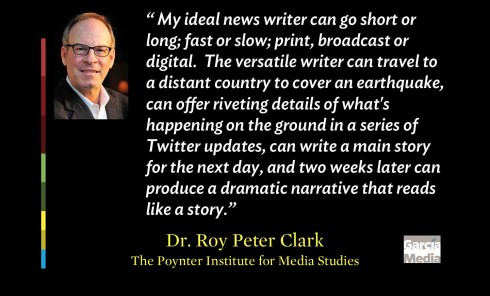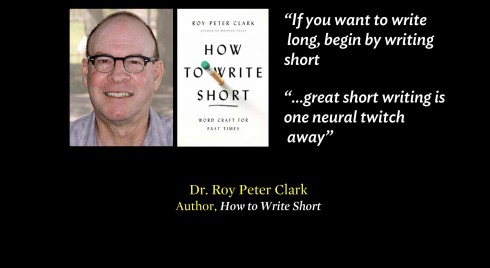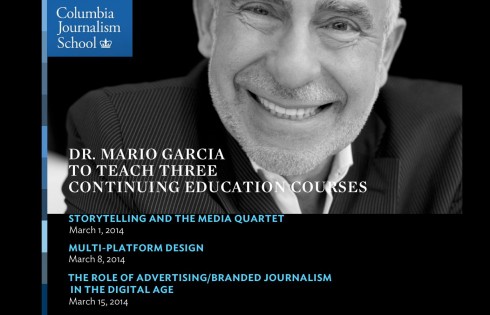This is the weekend edition of TheMarioBlog and will be updated as needed. Monday is Martin Luther King, Jr. Day. The next blog post will be Tuesday, January 21.
TAKEAWAY: The English language used in newswriting today is not that which many of us learned in journalism classes. With more “authors” out there writing social media entries, English is getting a workout and transforming itself.
I often think these days of two of my journalism professors of another era who left a mark on my training, and who, if they were to reappear today, armed with their legendary red grease pencils, would be crossing a lot of words, questioning others, and, in total shock.
Professors Arthur Sanderson and Barbara Garfunkel would start by telling us that newswriting is not what it used to be, just like the definition of news is nothing like what that 1917 textbook by Lyle Spencer, Newswriting, proposed it to be.
Today’s writing is chatty, informal, street-driven and borrowing more from the styles of fictional writing than that of news.
Take, headlines, for example: future tense is now an acceptable reality (and, why not?). Especially with print, where so many of the stories land on a page hours after they were first reported digitally, why not use a future tense, to give the story a longer shelf life, and to project it into tomorrow or the next day? And, how about those “verbless” headlines? Yes, headlines like “The Perfectionist in Chief”, which sounds more like what one would see on the cover of TIME or Newsweek as the story of the week, but which now is perfectly acceptable in a daily newspaper. In fact, sometimes it is the verbless headline that seduces, that makes the story timeless, that invites the reader to explore the text.
Take out that grease pencil
And for those who don’t remember life without Google, this is what a grease pencil looks like (Image courtesy http://www.ebay.com)
Professors Sanderson and Garfunkel would not approve, or maybe, as individuals who loved their craft and updated themselves constantly, they would go for it.
Now, an article reminds us that the English language used for newswriting has changed, and how. Here is a take from what the author tells us about the status of news writing then and now.
And about today?
“The overwhelming majority of widely-read nonfiction was written in an even smaller, strictly controlled subset of SWE – call it CSWE, for Clinical Standard Written English. Textbooks. Cookbooks. IRS instructions. The New York Times, the Wall Street Journal, the British broadsheets, etc. All written in a similar mode: authoritative, declamatory, distant, dispassionate, impersonal, and (allegedly) neutral. Formal, pure, and precise.“
“But now is different. Now is the era of social media. Now people are both reading and writing more words, by far, than they ever have before — which is great, right? — but only a small and diminishing fraction of those words are written in SWE (Standard Written English).
A writer and versatility

My friend and colleague Dr. Roy Peter Clark, Vice President and Senior Scholar at The Poynter Institute for Media Studies, who’s without a doubt the nation’s foremost writing guru, goes beyond the language issue to offer some insights into styles of news writing for the modern era:
Perhaps the greatest virtue for a news writer in 2014 is versatility. Even if a journalist specializes in a context area: health, law, business, that writer will still have to produce content and copy for a wide array of audiences, at different lengths, for different platforms.
My ideal news writer can go short or long; fast or slow; print, broadcast or digital. The versatile writer can travel to a distant country to cover an earthquake, can offer riveting details of what’s happening on the ground in a series of Twitter updates, can write a main story for the next day, and two weeks later can produce a dramatic narrative that reads like a story. No matter how things change, we still live in a world of reports and stories. Reports render information; they point us there. Stories render experience; they put us there. For reports we still look for the who, what, when, where, why and how. For stories we convert those to character, action, chronology, setting, motive, and how things came to pass.
In the process, I believe, the writer Roy describes would probably determine what “kind” of English he will be using depending on the style of writing and the platform on which it will be consumed.
My old professors will definitely agree with Roy’s assessment.
And, while they may not necessarily like what is happening to the proper use of English they so emphasized in their teaching, they would appreciate that people are writing more words than ever before. All those tweets and Facebook entries have an author.
Soon we will need to have a stylebook with guidelines for how to use proper English even in informal communications, definitely not the standard English of another era, but one that preserves correctness while emphasizing the chatty and personal style that is such a part of how we communicate with each other today.
Of special interest:

Dr. Roy Peter Clark’s new book: How to Write Short
It is not only the English language that may be used more informally in some forms of news writing today. It is also the style and length of stories. As Roy states in this extremely useful and fun book, short-form writing has become an essential skill. The book covers how to write effective and powerful titles, headlines, essays, sales pitches, Tweets, letters, and even self-descriptions for online dating services.
My Continuing Education Courses at Columbia University

One of the most exciting aspects of my semester as Hearst Digital Media Professional in Residence at Columbia University’s Graduate School of Journalism is that it will not only allow me to teach a regular class for graduate students, but also, conduct three courses via the School’s Continuing Education Program.
The three courses, which are open to the public, are:
Storytelling and the Media Quartet
Multi-Platform Design
The Role of Advertising/Branded Journalism in the Digital Age
A Multi-Platform Design & Storytelling 3-Series Bundle is available at a discounted price, which includes the aforementioned courses: Multi-Platform Design, Storytelling and the Media Quartet, and The Role of Advertising/Branded Journalism in the Digital Age. Register for the 3-course series.
Enrollment is limited so please act soon if you are interested in these courses.
The classes will run on a Saturday from 9 a.m. to 1 p.m.
About the three courses
Storytelling and the Media Quartet
Overview: Readers get their news from multiple platforms, and today’s journalists must therefore learn to tell stories for and across these platforms. This short course will focus on design (visual presentation) and storytelling (story structures and genres) for mobile, tablet, web, and print.
Participants will leave with a better understanding of the role each platform plays. They will gain hands-on experience designing story prototypes for the major platforms, taking into account the unique characteristics of each
When: March 1, 2014
Where: Columbia University Graduate School of Journalism, 2950 Broadway, New York, NY 10027
Multi-Platform Design
Overview: Our audience first comes in contact with content visually. Readers/users give us 10 seconds in which to attract them to the content in our products. This course will deal with the design elements that make each platform unique. It will present design as functionality through a variety of case studies across smartphones, online, print and tablets. Discussions will include typography, grids, story structures and color palettes.
Participants will gain the skills that will allow them to extend a design concept across platforms, while respecting the individual peculiarities and functionality of each. Participants will take part on a design sketching exercise.
When: March 8, 2014
Where: Columbia University Graduate School of Journalism, 2950 Broadway, New York, NY 10027
The role of Advertising/Branded Journalism in the digital age
Overview: Based on industry forecasts, online advertising is growing so fast it will generate five times the revenue of print by 2018. And that means media companies have to move even faster to adapt their sales strategies. At the same time, in a world with an overabundance of messages, brands find it difficult to get their message across, which is why many are turning to established publications to team up with them in what’s referred to as “branded journalism”. This course will explore the strategies of branded journalism through successful case studies.
Participants will engage in an exercise taking a brand of a well known product through a branded journalism strategy.
When: March 15, 2014
Where: Columbia University Graduate School of Journalism, 2950 Broadway, New York, NY 10027
http://www.journalism.columbia.edu/page/843-continuing-education-offerings/638
Posted by Dr. Mario R. Garcia on January 17, 2014